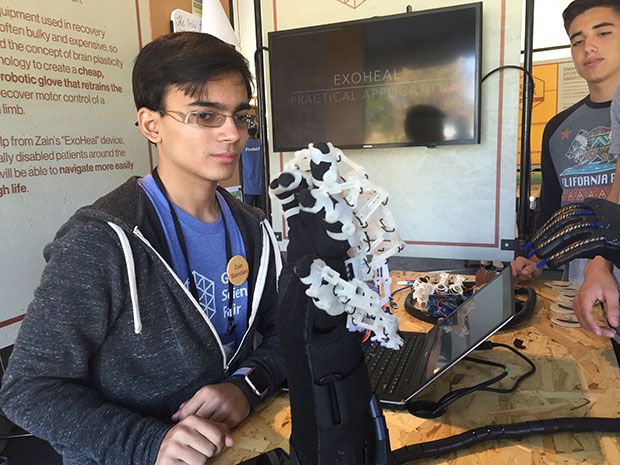Google Science Fair: A 3D-Printed Exoskeleton That Can Train a Paralyzed Hand to Move Again
A 16-year-old from Saudi Arabia develops an exoskeleton and control glove to revolutionize physical therapy for stroke patients
Rebuilding fine motor skills after a stroke takes intensive therapy that requires repeated attempts to use the affected hand, several times a day, day after day. Some therapies involve moving the affected fingers with the other hand until new brain pathways for hand control develop. Zain Samdani, a 16-year-old from Saudi Arabia and a finalist in the 2016 Google Science Fair, demonstrated a different approach at the finalist showcase on Tuesday.
Samdani, who says he’d seen family members struggling with hand rehab, built an exoskeleton out of 3D-printed segments. He connected that to a glove that he wired to control the robotic device. The patient, he says, can wear the glove on the functional hand, and use that hand’s movements to retrain the paralyzed hand. [See video, above.]
In early tests on patients, Samdani reports, in one day the exoskeleton led to levels of improvement that physical therapists wouldn’t typically see for weeks.
Tekla S. Perry is a senior editor at IEEE Spectrum. Based in Palo Alto, Calif., she's been covering the people, companies, and technology that make Silicon Valley a special place for more than 40 years. An IEEE member, she holds a bachelor's degree in journalism from Michigan State University.
